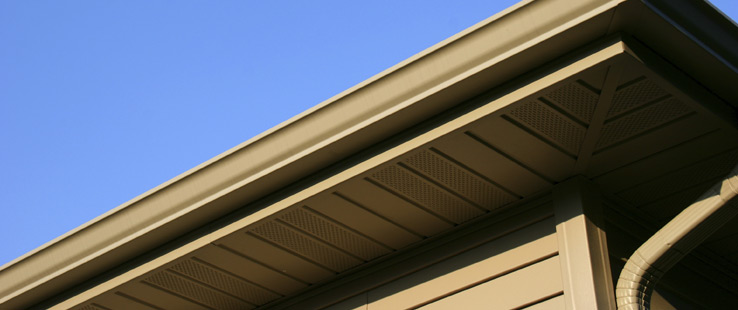Get the Siding Job Right

Steven Oransky knows what a simple paint chip can reveal about a wood siding surface. The Five Star Painting franchise owner in North Shore Boston says the back of a chip is a great indicator for how to proceed with prep.
“If the wood is on the back of the chip, then you know the surface has to be sanded. It’s not the paint failing, it’s the wood,” Oransky clarifies.
Any Pro knows weathered wood is due for a good sanding before oil priming and painting. But siding also comes in many different material types: aluminum, cement, vinyl and plenty of others. Knowing the pros and cons each material brings is key to keeping customers happy.
Vinyl and color
For some time, when homeowners wanted to change the paint color on their vinyl siding, Pros recommended the same, or lighter, color. For years, darker tints didn’t seem to work well on vinyl, says Chris Drucquer, a CertaPro franchisee near Philadelphia.
Drucquer still does not recommend a very dark color for vinyl siding paint jobs. But he also admits the tint technology has improved greatly through the years, offering up some flexibility. “Paint manufacturers have made it a lot easier now. They all have their own formulations,” he said. “For a long time, there was also the misconception that you could only paint vinyl in the exact same color.”
Mike Felten of ProTect Painters in Yorkville, IL, says he’s seen some darker tints do well. Pros agree it’s best to become familiar with a manufacturer’s ability to tint for vinyl surfaces. Talk to reps from the company and get guidance for darker surfaces. “So many … people don’t realize they can paint [vinyl]. They think they’re stuck.” Felten adds.
Dry it out
Pros know that any job is only as good as its prep. But unfortunately, too many still overlook how clean and dry a surface really should be before painting, adds Felten.
“You see these crews that come out, pressure-wash, and in a couple hours they’re done with a 2,000-square-foot home … We use mildewcides, cleaners … the rules are: clean, dull, and dry. … If you have those three, the better the job is in the end,” Felten says.
Dry time is another factor to keep in mind. Watch the weather forecast. Felten’s rules of thumb are: above 70 degrees, one day for drying; under 70 degrees, allow two.
With a vinyl siding job, water can build up in J-channels and in areas underneath the siding after a pressure-wash, adds Bill Torres, of Bill Torres Painting LLC in Mount Joy, PA. Like Felten, Torres pays very close attention to drying out a siding surface, and he’s always checking the weather forecast. “You just don’t want to get in too big of a hurry when putting the paint on.”




